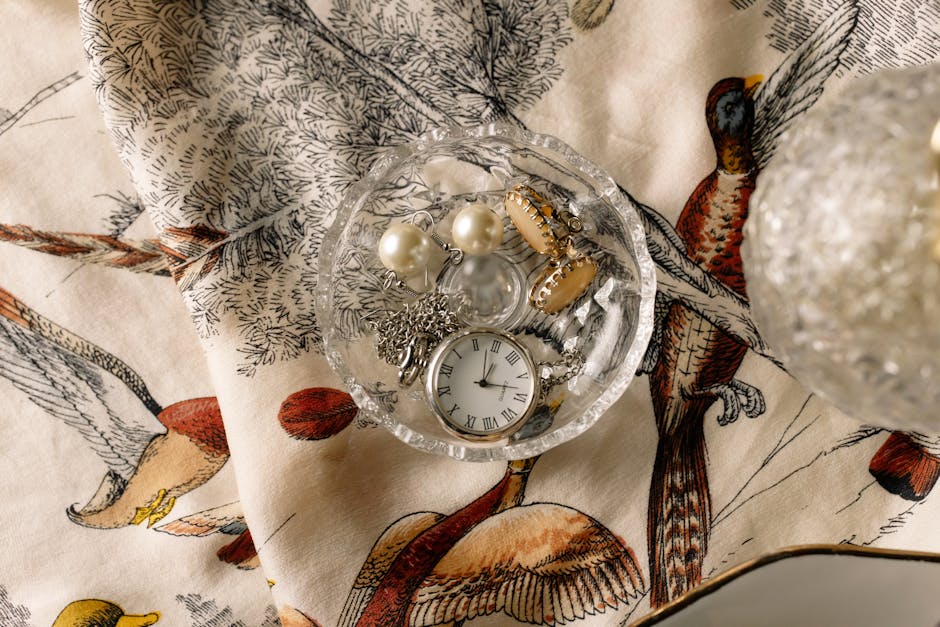
Introduction to the World of Pearls
Pearls have a magic about them; they’re more than just a shiny object you wear. For centuries, they’ve meant something special across the world, symbolizing purity, wisdom, and wealth. Imagine diving deep into the ocean, finding an oyster, and inside, there’s this perfect, gleaming pearl. That’s a kind of natural magic, right? But pearls aren’t just jewels; they are storytellers, holding tales of ancient civilizations and rich cultures. They’ve been worn by kings and queens, adored in paintings, and even used as currency. Each pearl is unique, just like the stories they carry from different parts of our world. So, when you look at a pearl, remember, it’s not just a piece of jewelry. It’s a piece of history, an artifact of elegance, and a bridge to cultures far and wide.
The Historical Significance of Pearls Across Cultures
Pearls have been treasured for millennia, not just as mere ornaments but as symbols of wealth, purity, and wisdom across various cultures worldwide. In ancient Rome, pearls were seen as the ultimate status symbol, worn by the rich and powerful to show their wealth and social ranking. Meanwhile, in ancient China, pearls were believed to offer protection from fire and dragons, signifying the wearer’s strength and wisdom. The Egyptians prized pearls so much that they were buried with them, as seen in the case of Cleopatra, who famously crushed a pearl into a glass of vinegar to prove she could host the most expensive dinner in history. In Japanese culture, pearls symbolize purity and integrity and are often given as gifts during key life moments. This shared appreciation for pearls underscores their universal appeal and the timeless fascination they hold in human history. Their enduring legacy in fashion and jewelry, passed down through generations, speaks to their unchanging allure and the deep meanings cultures around the world have attached to these iridescent gems.
The Symbolism of Pearl in Ancient Civilizations
Since ancient times, people have marveled at the beauty and mystery of pearls. These natural wonders were not just pretty things to look at; they held deep meanings and symbolism across various cultures worldwide. In ancient Greece, pearls were believed to be tears of joy from the goddess of love, Aphrodite. The Greeks associated pearls with love and marriage, often giving them as wedding gifts. Moving over to ancient Rome, pearls were ultimate symbols of wealth and social standing. The richer you were, the more pearls you flaunted. It was all about showing off power and status. Then there’s Ancient Egypt, where pearls were so cherished that they were buried with the dead. Cleopatra is said to have dissolved a pearl in a glass of vinegar to prove she could consume the wealth of an entire nation in just one meal. In Chinese cultures, pearls were thought to protect one from fire and dragons, symbolizing wisdom achieved through experience. They were prized not just for their beauty but also for the protective powers they were believed to hold. So, across different corners of the world, from Greece and Rome to Egypt and China, pearls were more than just adornments. They were potent symbols of love, wealth, protection, and wisdom.
Pearls in Eastern Traditions: A Sign of Wealth and Purity
In Eastern traditions, pearls are not just gems; they’re symbols of wealth and purity. For centuries, nobles and royalty in places like China, India, and Japan have adorned themselves with pearls to showcase their status. The Chinese valued pearls so much that they were once used as offerings to royalty and as gifts to win favor. In India, pearls have long been associated with the gods, believed to be dewdrops from heaven caught by shells in the ocean’s depths. Meanwhile, in Japan, pearls are tied to purity and perfection, partly because of their role in the Shinto religion, where they are often used in rituals. Dive into the history, and you’ll find stories of emperors and empresses, maharajas, and samurais, all with a common thread—a deep reverence for the humble pearl. Their significance goes beyond mere decoration; pearls in these cultures symbolize the highest virtues and aspirations of human life.
The Role of Pearls in Western Fashion and Royalty
In Western culture, pearls have been a symbol of elegance and sophistication for centuries. They’re not just accessories; they’re a statement. Historically, pearls were so valued that only the nobility and royal families could afford them. Think about Queen Elizabeth I of England, draped in pearls, showcasing her power and wealth. In fashion, pearls transformed from royal jewels to a staple in every classy woman’s wardrobe. Designers like Coco Chanel embraced pearls, making them a symbol of chic femininity. Chanel famously said, “A woman needs ropes and ropes of pearls.” In today’s fashion, pearls continue to evolve, but their essence of luxury and elegance remains unchanged. Whether it’s a simple pearl necklace or an avant-garde piece, pearls in Western fashion and royalty symbolize a timeless grace that transcends generations.
Spiritual and Healing Properties Attributed to Pearls
Across different cultures, people believe pearls hold unique spiritual and healing properties. It’s thought that wearing pearls can bring calmness and foster tranquility. They’re often seen as a source of emotional balance, helping the wearer to manage stress and negative feelings. Some cultures view pearls as a connector to the moon, with its soothing energy influencing the tides of our emotions. They’re also believed to symbolize purity and promote integrity in the wearer. Healing stories tied to pearls include their use in traditional medicines to cure ailments ranging from simple eye issues to more severe heart problems. The idea here is that pearls, with their serene beauty, have the power to heal both the mind and body, making them more than just an adornment.
The Journey of a Pearl: From Oyster to Ornament
Pearls start their journey inside an oyster or a mussel living in the sea or freshwater. The magic begins when a tiny irritant, often a grain of sand, gets inside the shell. The oyster reacts by covering this irritant with layers of a special substance called nacre. Over time, these layers build up, transforming the irritant into a pearl. Think of it like the oyster making lemonade out of lemons. This process can take several years. Natural pearls are rare and most pearls today are cultured. This means humans intentionally place the irritant inside the oyster to start the process. After the pearl is harvested, it goes through sorting, cleaning, and sometimes treatment to enhance its beauty before being turned into jewelry. Whether as a simple, elegant necklace or a part of a lavish crown, pearls have adorned people for thousands of years, adding a touch of grace and elegance.
The Varieties of Pearls and Their Unique Characteristics
Pearls boast a variety of types, each with its own unique allure. Freshwater pearls, sourced from lakes and rivers, are beloved for their remarkable range of shapes, sizes, and colors. They’re the go-to for versatility and affordability. Meanwhile, saltwater pearls, including the coveted Akoya, Tahitian, and South Sea pearls, emerge from the ocean’s depths. Akoya pearls, hailing from Japan and China, shine with their round shape and lustrous glow, making them a classic choice for elegance. Tahitian pearls, dark and exotic, stand out with their unique hues ranging from gray to deep black. South Sea pearls, primarily from Australia and the Philippines, impress with their size and creamy, satiny luster. Each type of pearl carries its own story, steeped in the traditions and cultures of its origins, symbolizing purity, wisdom, and wealth across the globe.
Contemporary Uses of Pearls in Jewelry and Fashion
Today, pearls are a big deal in both jewelry and fashion, showing up in everything from everyday wear to high-end designer collections. Let’s break it down. In jewelry, pearls are no longer just for your grandma’s necklace. Designers are getting creative, crafting pieces that mix pearls with metals, leather, and even other gemstones. You’ll see pearls in earrings, bracelets, chokers, and yes, still in classic necklaces but with a modern twist.
In fashion, pearls are making a statement beyond accessories. They are being sewn into clothes, adorning collars, cuffs, and even shoes. Some designers use pearls to add a touch of elegance to casual wear, like jeans and t-shirts, while others go all out, embedding them into luxurious gowns and formal outfits. The idea is simple: pearls add a sense of sophistication and a nod to tradition, but when used in new ways, they’re anything but old-fashioned.
It’s not just about looking good, though. Pearls carry a certain meaning: a blend of sophistication and purity, and in many cultures, a symbol of wealth and status. Integrating pearls into everyday fashion and jewelry is like wearing a piece of history, but with a modern edge that says, “I respect traditions but on my terms.”
So, next time you spot pearls, remember, it’s not just an accessory. It’s a statement. Pearls have come a long way, and from the looks of it, they’re here to stay in the fashion world, proving that elegance never really goes out of style.
Preserving the Legacy of Pearls for Future Generations
Preserving the legacy of pearls needs action today. Think of pearls like treasures passed down through generations. To keep their luster and significance alive, caring for them and understanding their value in various cultures is crucial. Start by educating others on the history of pearls, their role in different societies, and how they represent wisdom, wealth, and purity across the globe. Support sustainable pearl farming too. This method respects our oceans and ensures pearls can be harvested without harming marine life. Also, encourage investing in authentic pearls over synthetic ones. This not only preserves the craftsmanship behind pearl jewelry but also upholds the cultural heritage linked to natural pearls. Sharing stories about pearls in your family or community can spark interest in younger people, making them appreciate and continue the tradition of valuing pearls. By taking these steps, we ensure the legacy of pearls shines on, connecting us to our past and to cultures around the world.







